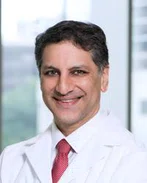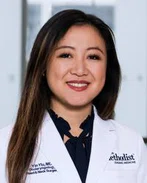

Making Voices Heard — and Healthy — at the Texas Voice Center
Making Voices Heard — and Healthy — at the Texas Voice Center
Inside the Texas Voice Center, Apurva Thekdi, MD, leads a highly trained team providing comprehensive care for all laryngeal disorders. The team, which includes fellowship-trained laryngologist Yin Yiu, MD, and two speech-language pathologists, is unparalleled in the Houston area — and beyond.

Apurva Thekdi, MD

Yin Yiu, MD
Seeing both singers and ‘professional voice users’
The center treats patient cohorts for swallowing, breathing and voice diagnoses. Professional vocalists of all kinds — from well-known opera and pop singers to professional choristers — seek out Thekdi and his team for their expertise. In fact, Texas Voice Center is the official provider for the Houston Grand Opera and regularly treats students from the Shepherd School of Music at Rice University, an internationally renowned music program.
The center also welcomes what Thekdi calls “professional voice users”: schoolteachers, attorneys, salespeople and even other physicians for some examples.
“There are many people who use their voice extensively in a professional setting,” Thekdi said. “Our practice is about one-third professional or semiprofessional singers and two-thirds professional voice users.”
Leading-edge diagnosis
Workup is highly individual and often complex, using advanced diagnostic testing to pinpoint the etiology of the disorder and develop a treatment plan.
One of the team’s state-of-the-art diagnostic tools is digital videolaryngostroboscopy, which enables highly magnified visualization of the larynx and vocal cord function. It’s the most advanced technique for diagnosing even the most subtle disorders of the larynx, particularly lesions not visible with traditional imaging technology, and providing optimal treatment recommendations. Computer voice analysis is also used to pinpoint flaws in the singing and speaking voice, as well as to measure therapy progress.
Recent shifts in diagnoses
After the pandemic began, Thekdi noticed a shift in the diagnoses he was seeing.
“In the beginning of the pandemic, we were seeing fewer professional singers and performers, simply because they weren’t performing,” Thekdi said. “We’re currently seeing a lot of patients with airway stenosis, much more than previously. Not a lot of physicians have experience treating it, and we’re treating it quite a bit. Some patients were intubated while sick with COVID-19, and they’re having residual airway problems.”
The airway narrowing results in difficulty breathing, in addition to impacts on the voice and dysphagia. Depending on the location and extent of the stenosis, a variety of leading-edge treatment options are available. The team collaborates with pulmonologists, thoracic surgeons and interventional radiologists on these cases as well.
When asked how other ENTs might determine whether a referral to the center is warranted, Thekdi said, “If a patient isn’t improving with standard treatment, we often have the resources and expertise to help.”








